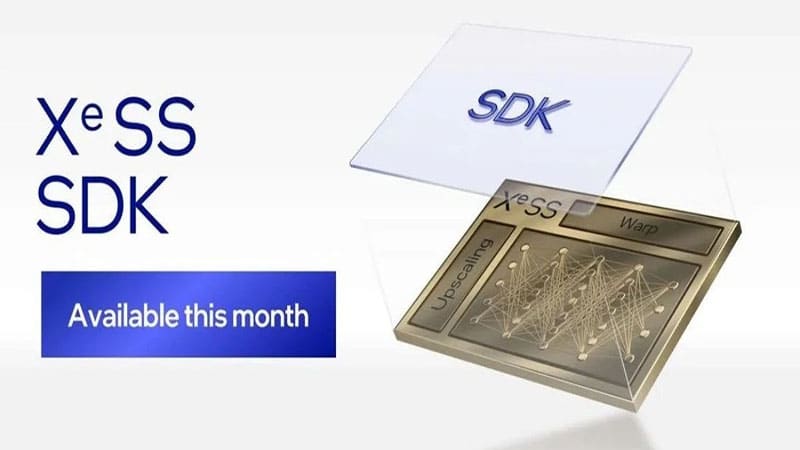Intel introduced Xe Super Sampling (XeSS) during GDC 2022, showing more details about this technology. They also explained how XeSS works by upscaling the image. And Intel executives showed real-time scaling along with explanatory graphs on performance.
The session was introduced by Robert Kawiak, Intel Graphics Software Engineer. After introducing XeSS and the design decisions behind the technology, Kawiak reviewed some of its compelling qualities over rival technologies.

The main thing to remember about Intel XeSS is that it is an AI-based Super Sampling technique for real-time rendering. It is optimized for Xe GPUs as it will work best with Arc Alchemist Xe Matrix extensions (Intel XMX), but it also runs using DX12 SM6.4+ and DP4a support on other GPU architectures. This makes it platform and hardware independent, and Intel says that the SDK will be open source.

Intel has focused on how developers can use XeSS. They also announced a plugin for Unreal Engine for simplified integration of their upscaler into engine projects.. Intel states that XeSS “replaces TAA in the rendering process” in projects, so it is applied after rasterization and lighting are complete, and should be inserted early in the post-processing phase.
Intel AI has been said to alleviate the effects of ghosting, reflections, and blurring that are present in upsampling antialiasing (TAAU). Additionally, Intel claims that its XeSS can achieve higher scaling rates than rivals like AMD FSR or Nvidia DLSS.

Software performance in detail
As with any scaler, the main goal is to reduce the load on the pixel channel to allow higher frame rates at higher resolutions. The trick is to do it while maintaining image quality.
The core part of the presentation included the developers from Massive Work Studio playing their own Rens game implementing XeSS and commenting on the graphics and performance that can be seen on the screen.. Portions of this coverage include split-screen action with 1080p on one side and 4K XeSS on the other.
The XeSS demo on Rens tested various scaling modes, which you can see in more detail in the graphic below. All five quality settings were tested by running Rens at 2160p and 1440p.

A common feature of rival AMD and Nvidia technologies is that they offer various quality modes, which change the balance between quality and upscaling performance.
Intel has revealed its five quality levels: Ultra Performance (up to 3.0x scaling factor), Performance (2.0), Balanced (1.7), Quality (1.5) and Ultra Quality (1.3) . At 4K, the scaling factor corresponded very closely to the relative increase in frame rate performance to expect in this game.

There is still no specific date for the launch of XeSS, nor details about which games will have this function. However, the official launch of Intel Arc Alchemist boards was yesterday, so we have no doubt that Intel’s upscaling technology will soon appear as part of the upcoming 2022 and beyond releases. We will keep you informed about it as soon as we have more information.
What do you think of Intel XeSS technology? Pretty good, isn’t it?
Source: Techspot















